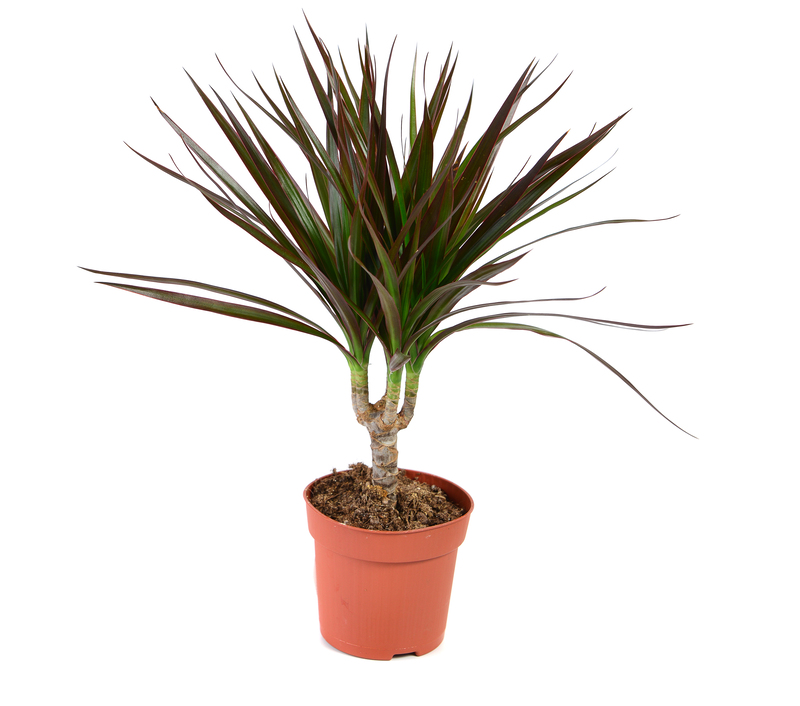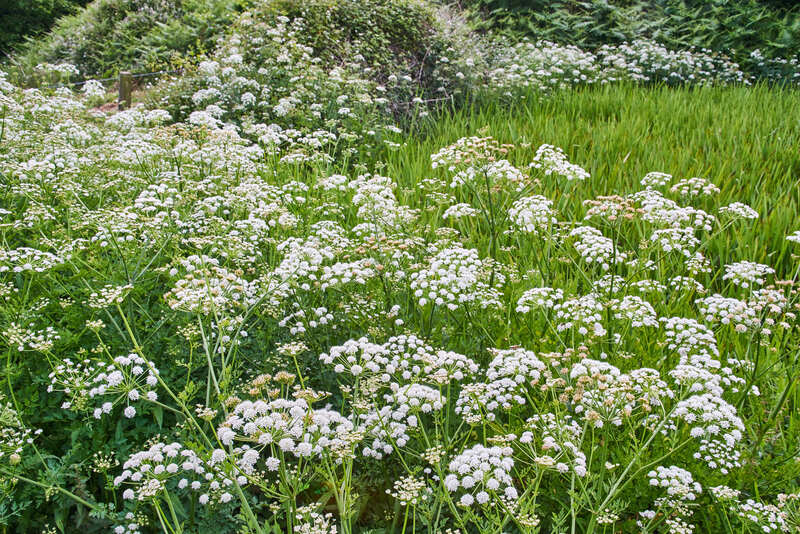5 Smart Ways to Create a Low Maintenance Garden Without Overspending
Posted on 14/06/2025
5 Smart Ways to Create a Low Maintenance Garden Without Overspending
Dreaming of a lush, beautiful outdoor space but worried about time and budget constraints? Many homeowners and gardening enthusiasts long for a tranquil, green escape right in their backyard, but the costs and upkeep associated with traditional gardens can be daunting. The good news is that a low maintenance garden on a budget is absolutely achievable. With the right planning, design choices, and plant selection, you can enjoy an attractive garden that won't require endless hours of work or drain your wallet. In this comprehensive guide, we'll explore five smart strategies to help you create a low effort, cost-effective garden that flourishes year-round.
Why Opt for a Low Maintenance Garden?
The concept of low maintenance gardening has gained significant traction among busy families and those seeking sustainable living. The appeal lies in its promise: an outdoor space that looks great with minimal input, reduced costs, and sensible use of resources. By focusing on smart design choices and efficient planting, you can:
- Save time on chores like mowing, weeding, and pruning, freeing you up to actually enjoy your garden.
- Reduce water and energy bills by using drought-tolerant plants and efficient irrigation methods.
- Lower overall spending by minimizing long-term maintenance costs and reliance on expensive landscaping services.
- Enhance sustainability by encouraging biodiversity and reducing resource use.
- Increase property value with attractive, functional outdoor spaces that are easy to care for.
Ready to transform your outdoor area? Let's discover how to create a low-maintenance, affordable garden step by step.

1. Plan and Design for Simplicity
Smart garden design lies at the heart of any successful low maintenance landscape, especially for those mindful of their budgets. Before purchasing plants or materials, take the time to assess your space, needs, and goals.
Assess Your Garden Space
- Analyze sun and shade patterns: Observe which parts of the garden receive the most sunlight or are frequently shaded. This will inform your plant selection and positioning.
- Check your soil type and drainage: Understanding your soil will help you select plants and improvements that thrive in existing conditions, saving you money on soil amendments.
- Map out existing features: Include trees, structures, and established plants that can be incorporated into your new design, reducing waste and costs.
Embrace Simple Garden Layouts
- Limit the number of different plant varieties. Mass planting in groups reduces visual clutter and maintenance, as similar plants often share care requirements.
- Design clear, wide paths for easy movement and access. This not only increases practicality but lowers weeding and trimming work.
- Favor large, open planting beds rather than many small, fiddly pockets that require more individualized attention.
By thoughtfully designing your low maintenance garden, you can maximize impact, reduce unnecessary expenses, and pave the way for an easier gardening journey.
2. Choose the Right Plants for Minimal Care
Plant selection is critical in keeping both maintenance and expenses down. The secret: pick hardy, low care plants that thrive in your climate and require little intervention.
Opt for Native and Adapted Species
- Native plants are accustomed to local conditions, requiring less water, fertilizer, and attention than exotic species.
- Local wildlife will benefit, boosting biodiversity while you save time and money.
- Check resources like your state extension office or native plant societies for species lists and guidance.
Consider Drought-Tolerant and Perennial Options
- Drought-resistant plants like lavender, sedum, ornamental grasses, and succulents are perfect for hands-off gardens and help cut watering costs.
- Perennials come back every year, unlike annuals that must be replanted. Over time, they multiply--a smart way to fill beds at no extra cost.
- For groundcover, consider creeping thyme, vinca, or clover to suppress weeds and reduce mowing.
Use Fewer, Larger Plants
- Larger plants create instant impact and will cover ground faster, limiting need for ongoing weeding and mulching.
- Start small by propagating cuttings from a friend's garden or splitting existing clumps--a great money saver.
Choosing plants suited to your conditions means less effort, fewer expensive chemical treatments, and a more resilient, low maintenance backyard garden.
3. Mulch and Groundcover: Nature's Best Weed Blockers
One of the enduring low maintenance gardening tips is the strategic use of mulch and living groundcovers to keep weeds at bay, preserve soil moisture, and even enrich the earth as they decompose. Mulching is not only easy but also a budget-friendly garden hack everyone can use.
Benefits of Mulching
- Suppresses weed growth, dramatically cutting down on time spent weeding.
- Retains moisture in the soil, reducing the frequency of watering--important for both time and cost savings.
- Moderates soil temperature, protecting plant roots from harsh weather.
- As organic mulch decomposes, it improves soil structure and fertility at no extra cost.
Cost-Effective Mulch Sources
- Use homemade compost or grass clippings as mulch for free.
- Shredded bark, leaves, or straw are low-cost organic mulches available in most areas.
- Many municipalities give away wood chips or leaves for free--check local council offerings.
Choose Living Mulch with Groundcover Plants
- Plant groundcovers under trees or in open spaces for dense, weed-suppressing carpets.
- Creeping sedum, ajuga, or native wildflowers look attractive and accomplish the same goals as organic mulch.
Mulching your garden beds annually is a small-time investment that pays big dividends in less weeding and less water use--key for a truly low maintenance garden.
4. Use Smart Watering Strategies
Watering is often where garden maintenance and costs skyrocket. Yet, with a few water-saving garden tricks, you can dramatically cut the time, effort, and expense associated with irrigation.
Install Efficient Irrigation Systems
- Drip irrigation delivers water directly to the root zones of plants, using much less water than sprinklers and avoiding weed germination between plantings.
- Soaker hoses are a budget-friendly version, ideal for raised beds or borders.
- Add a timer to watering systems--this ensures consistency and means your garden gets watered even when you're away.
Water Early or Late
- Garden in the cool hours of early morning or late evening to reduce evaporation loss, making every drop count.
Collect and Reuse Rainwater
- Install a rain barrel to catch water from downspouts for free irrigation.
- Use greywater (from baths or washing veggies, not from sinks or toilets) on ornamental beds to further save on bills.
Implementing drought-wise planting and smart watering is not only sustainable--it's one of the best ways to keep your maintenance low without overspending.
5. Reduce Lawn Size or Replace Traditional Grass
Lawn care is among the most time-consuming and costly aspects of traditional gardens. The best low maintenance garden designs cleverly minimize turf areas or swap out grass for alternatives. This is a cornerstone of easy-care, budget-friendly landscaping.
Lawn Alternatives for Low Maintenance
- Plant groundcovers instead of grass in hard-to-mow areas. Clover, creeping thyme, or low-growing sedums are tough, drought-proof, and little care is needed once established.
- Use gravel, paving, or stepping stones to define paths and gathering areas. These require no mowing or watering and can look stylish and contemporary.
- For a natural look, create wildflower meadows in larger spaces--a wildlife-friendly solution requiring only once-a-year mowing.
- Artificial turf is increasingly popular, saving time and water, though initial costs are higher--consider small sections for play or pets.
Smaller, Manageable Lawn Spaces
- Define a smaller, intentional lawn area for children or entertaining.
- Choose drought-tolerant grass species (like Bermuda or Buffalo grass), which require less water and fertilizer.
Downsizing traditional lawns is one of the most effective ways to create a low maintenance garden that's visually appealing and economical.

Bonus Tips: Low Maintenance Garden Success on a Budget
- Start small and expand gradually as plants establish and your budget allows.
- Reuse and upcycle materials like bricks, stones, or containers from other projects.
- Share and swap plants, seeds, and cuttings with friends, neighbors, or local gardening groups.
- Apply organic methods to promote soil health, reducing reliance on costly fertilizers and pesticides.
- Emphasize season-long interest with a mix of evergreens, seasonal bloomers, and textural foliage for appealing looks year-round.
Remember: Smart planning, practical plant choices, and a few budget-friendly tricks go a long way toward a thriving garden that won't tie up your weekends or break the bank.
Conclusion: Enjoy Your Beautiful, Effortless, Budget Garden
With these 5 smart ways to create a low maintenance garden without overspending, you can transform your outdoor space into an oasis that offers year-round enjoyment--without the headache of endless chores or ongoing expenses. A low effort, low cost garden is all about working with nature, not against it: design simply, plant wisely, mulch generously, conserve water, and limit lawn areas. Tailor these ideas to your own space and watch as your garden flourishes with minimal input and maximum enjoyment. Make time for relaxation, not just for raking, and enjoy the beauty and tranquility of your new low maintenance garden haven!

